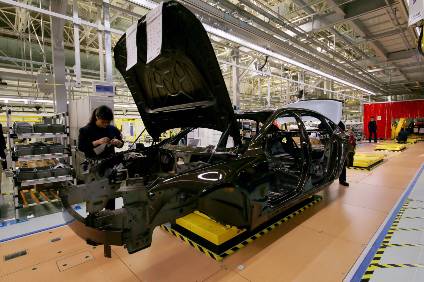The automotive industry continues to be a hotbed of innovation. Activity is driven by the need for passenger safety and enhanced in-car experiences, and growing importance of technologies such as machine learning, augmented reality, 5G and digitalisation. In the last three years alone, there have been over 1.2 million patents filed and granted in the automotive industry, according to GlobalData’s report on Cloud in Automotive: User biometric authentication. Buy the report here.
According to GlobalData’s Technology Foresights, which uses over 619,000 patents to analyse innovation intensity for the automotive industry, there are 290+ innovation areas that will shape the future of the industry.
User biometric authentication is a key innovation area in cloud
Biometric authentication involves the use of a person’s physical characteristics to identify them. The physical characteristics could be a physical trait such as a fingerprint, iris or retina scan. Some biometric authentication systems may use a single characteristic or several characteristics.
GlobalData’s analysis also uncovers the companies at the forefront of each innovation area and assesses the potential reach and impact of their patenting activity across different applications and geographies. According to GlobalData, there are 60+ companies, spanning technology vendors, established automotive companies, and up-and-coming start-ups engaged in the development and application of user biometric authentication.
Key players in user biometric authentication – a disruptive innovation in the automotive industry
‘Application diversity’ measures the number of different applications identified for each relevant patent. It broadly splits companies into either ‘niche’ or ‘diversified’ innovators.
‘Geographic reach’ refers to the number of different countries each relevant patent is registered in. It reflects the breadth of geographic application intended, ranging from ‘global’ to ‘local’.
Patent volumes related to user biometric authentication
Source: GlobalData Patent Analytics
Apple is one of the leading patent filers in the field of user biometric authentication. The use of traditional passwords is effectively done away with the generation and synchronisation of a passkey across a user's Apple devices, which enables login action by face or fingerprint biometrics. Some other key patent filers in the field include Microsoft and Alphabet.
To further understand how cloud is disrupting the automotive industry, access GlobalData’s latest thematic research report on Automotive.
Data Insights
From

The gold standard of business intelligence.
Blending expert knowledge with cutting-edge technology, GlobalData’s unrivalled proprietary data will enable you to decode what’s happening in your market. You can make better informed decisions and gain a future-proof advantage over your competitors.







